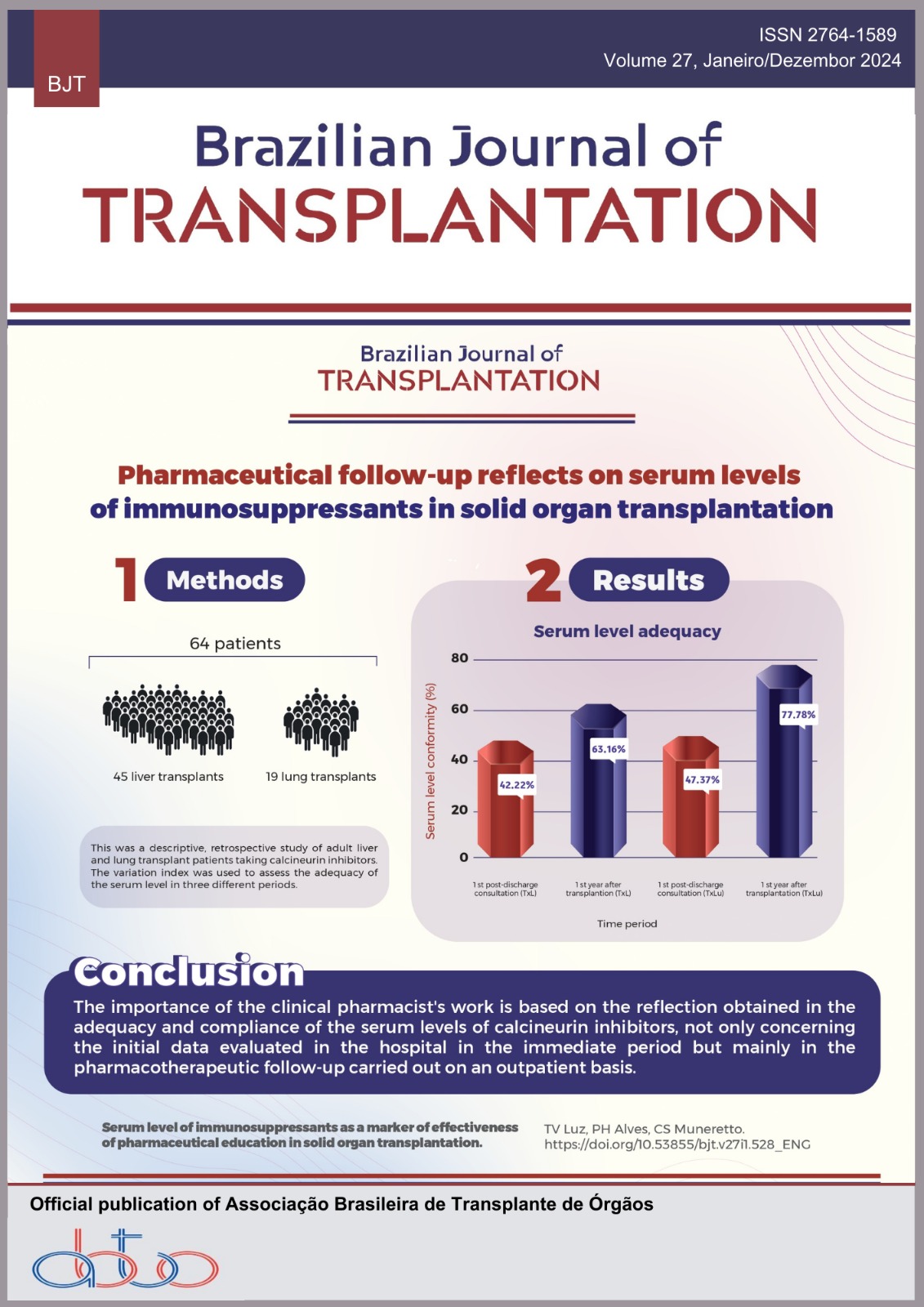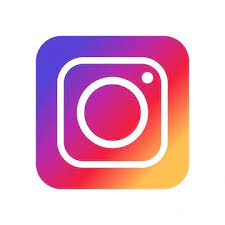Profilaxia no Transplante Renal
Palavras-chave:
Transplante de Rim, Infeção, Profilaxia, ImunossupressãoResumo
O transplante renal é o tratamento de excelência para a doença renal em estágio terminal, melhorando a sobrevivência e a qualidade de vida dos doentes em comparação com a diálise. No entanto, o uso de terapêutica imunossupressora para prevenção da rejeição do enxerto torna os recetores vulneráveis a infeções, uma complicação importante no período pós-transplante. As estratégias de profilaxia são indispensáveis para minimizar os riscos infeciosos e otimizar os resultados obtidos. Esta revisão pretende sistematizar as estratégias de profilaxia nas fases de pré-, peri- e pós-transplante, oferecendo uma visão abrangente das indicações, timing, doses e efeitos adversos. A profilaxia pré-transplante envolve a pesquisa meticulosa de infeções ativas, atualização do estado vacinal e tratamento de infeções latentes. A profilaxia peri-transplante concentra-se em abordagens antimicrobianas personalizadas, de forma a reduzir os riscos de infeção cirúrgica e relacionados com o dador durante o período do peri-operatório. A profilaxia pós-transplante é crucial para prevenir infeções oportunistas, com foco na pneumonia por Pneumocystis jirovecii e na infeção por citomegalovírus. Esta discussão pretende abranger as diferenças dos diversos regimes profiláticos, destacando a eficácia e os desafios associados aos agentes disponíveis e utilizados na prática clínica. Pretende ainda enfatizar o papel fundamental da instituição de profilaxias na minimização dos riscos infeciosos e na melhoria dos resultados dos recetores de transplante renal, defendendo uma abordagem proativa e multifacetada na gestão de doenças infeciosas nesse contexto.
Downloads
Referências
Wolfe RA, Ashby VB, Milford EL, et al. Comparison of mortality in all patients on dialysis, patients on dialysis awaiting transplantation, and recipients of a first cadaveric transplant. N Engl J Med 1999; 341: 1725-30. https://doi.org/10.1056/NEJM199912023412303
Rabbat CG, Thorpe KE, Russell JD, et al. Comparison of mortality risk for dialysis patients and cadaveric first renal transplant recipients in Ontario, Canada. J Am Soc Nephrol 2000; 11: 917-22. https://doi.org/10.1681/ASN.V115917
Fishman JA. Infection in solid-organ transplant recipients. N Engl J Med 2007; 357: 2601-14. https://doi.org/10.1056/NEJMra064928
Matevossian E, Kem H, Huser N, Doll D, Sonpok Y, Nahrig J, et al. Surgeon Yurii Voronoy (1895-1961) – a pioneer in the history in the history of clinical transplantation: in memoriam at the 75th anniversary of the first human kidney transplantation. Transpl Int 2009; 22(12): 1132-9. https://doi.org/10.1111/j.1432-2277.2009.00986.x
Snyder A. Joseph E Murray. Lancet 2012; 381: 110. https://doi.org/10.1016/S0140-6736(13)60038-0
Fishman JA. Opportunistic infections – Coming to the limits of immunosuppression? Cold Spring Harb Perspect Med 2013; 3: a015669 https://doi.org/10.1101/cshperspect.a015669
Malinis M, Boucher HW. Screening of donor and candidate prior to solid organ transplantation – Guidelines from the American Society of Transplantation Infectious Diseases Community of Practice. Clin Transpl 2019; 33: e13548. https://doi.org/10.1111/ctr.13548
Green M, Avery RK, Preiksaitis JK. Guidelines for the prevention and management of infectious complications of solid organ transplantation. Am J Transplant 2004 [cited in 05 Apr 2024]; 4 (Suppl 10): 51-8. Available from: https://www.cabidigitallibrary.org/doi/full/10.5555/20043193371
Fishman JA, Costa SF, Alexander BD. Infection in kidney transplant recipients. Kidney Transplantation-Principles and Practice 2019: 517-38. https://doi.org/10.1016/B978-0-323-53186-3.00031-0
Chong PP, Avery RK. A comprehensive review of immunization practices in solid organ transplant and hematopoietic stem cell transplant recipients. Clin Ther 2017; 39(8): 1581-98. https://doi.org/10.1016/j.clinthera.2017.07.005
Rubin LG, Levin MJ, Ljungman E, Davies G, Avery R, Tomblyn M, et al. 2013 IDSA clinical practice guideline for vaccination of the immunocompromised host. Clin Infect Dis 2014; 58(3): e44-100. https://doi.org/10.1093/cid/cit684
Danziger-Isakov L, Kumar D; AST ID Community of Practice. Vaccination of solid organ transplant candidates and recipients: guidelines from the American Society of Transplantation Infectious Diseases Community of Practice. Clin Transplant 2019; 33(9): e13563. https://doi.org/10.1111/ctr.13563
Vermeiren P, Aubert V, Sugamele R, Aubert J-D, Venetz J-P, Meylan P, et al. Influenza vaccination and humoral alloimmunity in solid organ transplant recipients. Transpl Int 2014; 27: 903-8. https://doi.org/10.1111/tri.12345
Hurst FP, Lee JJ, Jindal RM, Agodoa LY, Abbott KC. Outcomes associated with influenza vaccination in the first year after kidney transplantation. Clin J Am Soc Nephrol 2011; 6(5): 1192-7. https://doi.org/10.2215/CJN.05430610
Bumbacea D, Arend SM, Eyuboglu F, Fishman JA, Goletti D, Ison MG, et al. The risk of tuberculosis in transplant candidates and recipients: a TBNET consensus statement. Eur Respir J 2012; 40(4): 990-1013. https://doi.org/10.1183/09031936.00000712
Bratzler DW, Dellinger P, Olsen KM, Perl RM, Auwaerter PG, Bolon MK, et al. Clinical practice guidelines for antimicrobial prophylaxis in surgery. Am J Health Syst Pharm 2013; 70(3): 195-283. https://doi.org/10.2146/ajhp120568
Anesi JA, Blumberg EA, Abbo LM. Perioperative antibiotic prophylaxis to prevent surgical site infections in solid organ transplantation. Transplantation 2018; 102(1): 21-34. https://doi.org/10.1097/TP.0000000000001848
Shaikh SA, Zimmerman A, Nolan A, Cooper M, Abrams PL. The incidence of fungal infections in pancreas transplant recipients in the absence of systemic antifungal prophylaxis. Clin Transplant 2019; 33(10): e13691. https://doi.org/10.1111/ctr.13691
Dantas SR, Kuboyama RH, Mazzali M, Moretti ML. Nosocomial infections in renal transplant patients: risk factors and treatment implications associated with urinary tract and surgical site infections. J Hosp Infect 2006; 63(2): 117-23. https://doi.org/10.1016/j.jhin.2005.10.018
Cowan J, Bennett A, Fergusson N, McLean C, Mallick R, Cameron DW, et al. Incidence rate of post-kidney transplant infection: a retrospective cohort study examining infection rates at a large Canadian multicenter tertiary-care facility. Can J Kidney Health Dis 2018; 5: 2054358118799692. https://doi.org/10.1177/2054358118799692
Bharuka V, Meshram R, Munjewar PK. Comprehensive review of urinary tract infections in renal transplant recipients: clinical insights and management strategies. Cureus 2024; 16(2): e53882. https://doi.org/10.7759/cureus.53882. PMID:38465031
Dubberke ER, Burdette SD; AST Infectious Diseases Community of Practice. Clostridium difficile infections in solid organ transplantation. Am J Transplant 2013; 13(Suppl 4): 42-9. https://doi.org/10.1111/ajt.12097
Cortes NJ, Afzali B, MacLean D, Goldsmith DJ, O'Sullivan H, Bingham J, et al. Transmission of syphilis by solid organ transplantation. Am J Transplant 2006; 6(10): 2497-9. https://doi.org/10.1111/j.1600-6143.2006.01461.x
Durand CM, Bowring MG, Brown DM. Direct-acting antiviral prophylaxis in kidney transplantation from hepatitis C virusinfected donors to noninfected recipients: an open-label nonrandomized trial. Ann Intern Med 2018; 168(8): 533-40. https://doi.org/10.7326/M17-2871
Botha J, Fabian J, Etheredge H, Conradie F, Tiemessen CT. HIV and solid organ transplantation: where are we now? Curr HIV/AIDS Rep 2019; 16(5): 404-13. https://doi.org/10.1007/s11904-019-00460-7
Huprikar S, Danziger-Isakov L, Ahn J, Naugler S, Blumberg E, Avery RK, et al. Solid organ transplantation from hepatitis B virus – Positive donors: consensus guidelines for recipient management. Am J Transplant 2015; 15: 1162-72. https://doi.org/10.1111/ajt.13187
Singh N, Paterson DL. Mycobacterium tuberculosis infection in solid-organ transplant recipients: impact and implications for management. Clin Infect Dis 1998; 27(5): 1266-77. https://doi.org/10.1086/514993
Thompson ER, Hosgood SA, Nicholson ML, Wilson CH. Early versus late ureteric stent removal after kidney transplantation. Cochrane Database Syst Rev 2018; 1(1): CD011455. https://doi.org/10.1002/14651858.CD011455.pub2
Ponce CA, Gallo M, Bustamante R, Vargas SL. Pneumocystis colonization is highly prevalent in the autopsied lungs of the general population. Clin Infect Dis 2010; 50(3): 347-53. https://doi.org/10.1086/649868
Fishman JA. Prevention of infection caused by Pneumocystis carinii in transplant recipients. Clin Infect Dis 2001; 33(8): 1397-405. https://doi.org/10.1086/323129
Radisic M, Lattes R, Chapman JF, Rial MDC, Guardia O, Seu F, et al. Risk factors for Pneumocystis carinii pneumonia in kidney transplant recipients: a case-control study. Transpl Infect Dis 2003; 5(2): 84-93. https://doi.org/10.1034/j.1399-3062.2003.00018.x
Fishman JA, Gans H; AST Infectious Diseases Community of Practice. Pneumocystis jiroveci in solid organ transplantation: Guidelines from the American Society of Transplantation Infectious Diseases Community of Practice. Clin Transplant 2019; 33(9): e13587. https://doi.org/10.1111/ctr.13587
Stern A, Green H, Paul M, Vidal L, Leibovici L. Prophylaxis for Pneumocystis pneumonia in non-HIV immunocompromised patients. Cochrane Database Syst Rev 2014; 2014(10): CD005590. https://doi.org/10.1002/14651858.CD005590
Fowler K, Mucha J, Neumann M, et al. A systematic literature review of the global seroprevalence of cytomegalovirus: possible implications for treatment, screening, and vaccine development. BMC Public Health 2022; 22: 1659. https://doi.org/10.1186/s12889-022-13971-7
Kotton CN. CMV: prevention, diagnosis and therapy. Am J Transplant 2013;13(3): 24-40. https://doi.org/10.1111/ajt.12006
Limaye AP, Babu TM, Boeckh M. Progress and challenges in the prevention, diagnosis, and management of cytomegalovirus infection in transplantation. Clin Microbiol Rev 2020; 34:1. https://doi.org/10.1128/cmr.00043-19
Rubin RH. The indirect effects of cytomegalovirus infection on the outcome of organ transplantation. JAMA 1989; 261(24): 3607-9. https://doi.org/10.1001/jama.1989.03420240121038
Meesing A, Razonable RR. New developments in the management of cytomegalovirus infection after transplantation. Drugs 2018; 78(11): 1085-103. https://doi.org/10.1007/s40265-018-0943-1
Kotton CN, Kumar D, Caliendo A, Huprikar S, Sunwen C, Danziger-Isakov L, et al. The third international consensus guidelines on the management of cytomegalovirus in solid-organ transplantation. Transplantation 2018; 102(6): 900-31. https://doi.org/10.1097/TP.0000000000002191
Ruenroengbun N, Numthavaj P, Sapankaew T, Chaiyakittisopon K, Ingsathit A, Mckay GJ, et al. Efficacy and safety of conventional antiviral agents in preventive strategies for cytomegalovirus infection after kidney transplantation: a systematic review and network meta-analysis. Transpl Int 2021; 34(12): 2720. https://doi.org/10.1111/tri.14122
Hellemans R, Abramowicz D. Cytomegalovirus after kidney transplantation in 2020: moving towards personalized prevention. Nephrol Dial Transplant 2022; 37(5): 810-6. https://doi.org/10.1093/ndt/gfaa249
Chemaly RF, Chow S, Einsele H, Griffiths P, Avery R, Razonable RR, et al. Resistant definitions working group of the cytomegalovirus drug development forum. Definitions of resistant and refractory cytomegalovirus infection and disease in transplant recipients for use in clinical trials. Clin Infect Dis 2019; 68(8): 1420-6. https://doi.org/10.1093/cid/ciy696
Limaye AP, Budde K, Humar A, Vincenti F, Kuypers DFJj, Carroll RP, et al. Letermovir vs valganciclovir for prophylaxis of cytomegalovirus in high-risk kidney transplant recipients: a randomized clinical trial. JAMA 2023; 330(1): 33-42. https://doi.org/10.1001/jama.2023.9106
Winstead RJ, Kumar D, Brown A, Yakubu I, Song C, Thacker L, et al. Letermovir prophylaxis in solid organ transplant – Assessing CMV breakthrough and tacrolimus drug interaction. Transpl Infect Dis 2021; 23(4): e13570. https://doi.org/10.1111/tid.13570
Avery RK, Alain S; SOLSTICE Trial Investigators. Maribavir for refractory cytomegalovirus infections with or without resistance post-transplant: results from a Phase 3 randomized clinical trial. Clin Infect Dis 2022;75(4):690-701. https://doi.org/10.1093/cid/ciab988. Erratum in: Clin Infect Dis 2023; 76(3): 560. https://doi.org/10.1093/cid/ciac970
Sood P, Hariharan S. Anti-CD20 blocker rituximab in kidney transplantation. Transplantation 2018; 102(1): 44-58. https://doi.org/10.1097/TP.0000000000001849
Perrillo RP, Gish R, Falck-Ytter YT. American Gastroenterological Association Institute technical review on prevention and treatment of hepatitis B virus reactivation during immunosuppressive drug therapy. Gastroenterology 2015; 148(1): 221-44: e3. https://doi.org/10.1053/j.gastro.2014.10.038
Mikulska M, Lanini S, Gudiol C, Drgona L, Ippolito G, Fernández-Ruiz M, et al. ESCMID Study Group for Infections in Compromised Hosts (ESGICH) Consensus Document on the safety of targeted and biological therapies: an infectious diseases perspective (agents targeting lymphoid cells surface antigens [I]: CD19, CD20 and CD52). Clin Microbiol Infect 2018; 24(Suppl 2): S71-S82. https://doi.org/10.1016/j.cmi.2018.02.003
Martin-Garrido I, Carmona EM, Specks U, Limper AH. Pneumocystis pneumonia in patients treated with rituximab. Chest 2013; 144(1): 258-65. https://doi.org/10.1378/chest.12-0477
Rutherford AI, Patarata E, Subesinghe S, Hyrich KL, Galloway JB. Opportunistic infections in rheumatoid arthritis patients exposed to biologic therapy: results from the British Society for Rheumatology Biologics Register for Rheumatoid Arthritis. Rheumatology (Oxford) 2018; 57(6): 997-1001. https://doi.org/10.1093/rheumatology/key023
Clifford DB, Ances B, Costello C, Rosen-Schmidt S, Andersson M, Parks D, et al. Rituximab-associated progressive multifocal leukoencephalopathy in rheumatoid arthritis. Arch Neurol 2011; 68(9): 1156-64. https://doi.org/10.1001/archneurol.2011.103
Kelesidis T, Daikos G, Boumpas D, Tsiodras S. Does rituximab increase the incidence of infectious complications? A narrative review. Int J Infect Dis 2011; 15(1) :e2-16. https://doi.org/10.1016/j.ijid.2010.03.025
Grenda R, Durlik M. Eculizumab in renal transplantation: a 2017 update. Ann Transplant 2017; 22: 550-4. https://doi.org/10.12659/aot.905917
Peleg AY, Husain S, Kwak EJ, Silveira FP, Ndirangu M, Tran J, et al. Opportunistic infections in 547 organ transplant recipients receiving alemtuzumab, a humanized monoclonal CD-52 antibody. Clin Infect Dis 2007; 44(2): 204-12. https://doi.org/10.1086/510388
Wray S, Havrdova E, Snydman DR, Arnold DL, Cohen JA, Coles AJ, et al. Infection risk with alemtuzumab decreases over time: pooled analysis of 6-year data from the CAMMS223, CARE-MS I, and CARE-MS II studies and the CAMMS03409 extension study. Mult Scler 2019; 25(12): 1605-17. https://doi.org/10.1177/1352458518796675
Bamoulid J, Staeck O, Crépin T, Halleck F, Saas P, Brakemeier S, et al. Anti-thymocyte globulins in kidney transplantation: focus on current indications and long-term immunological side effects. Nephrol Dial Transplant 2017; 32(10): 1601-8. https://doi.org/10.1093/ndt/gfw368
Darres A, Ulloa C, Brakemeier S, Garrouste C, Bestard O, Del Bello A, et al. Conversion to belatacept in maintenance kidney transplant patients: a retrospective multicenter European study. Transplantation 2018; 102(9): 1545-52. https://doi.org/10.1097/TP.0000000000002192
Bertrand D, Chavarot N, Gatault P, Garrouste C, Bouvier N, Grall-Jezequel A, et al. Opportunistic infections after conversion to belatacept in kidney transplantation. Nephrol Dial Transplant 2020; 35(2): 336-45. https://doi.org/10.1093/ndt/gfz255
Downloads
Publicado
Como Citar
Edição
Seção
Licença
Copyright (c) 2024 Catarina Cardoso, Pedro Bravo, Ana Messias, Joana Martins, Carlos Oliveira

Este trabalho está licenciado sob uma licença Creative Commons Attribution 4.0 International License.

















